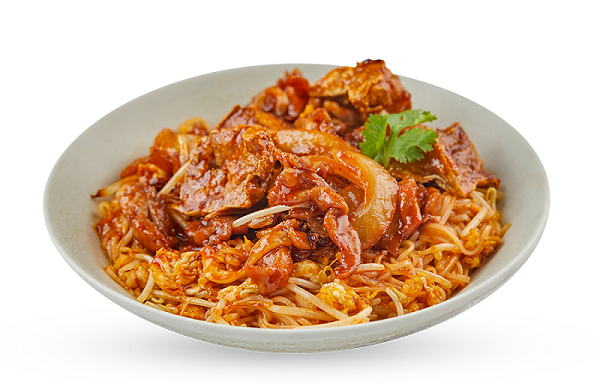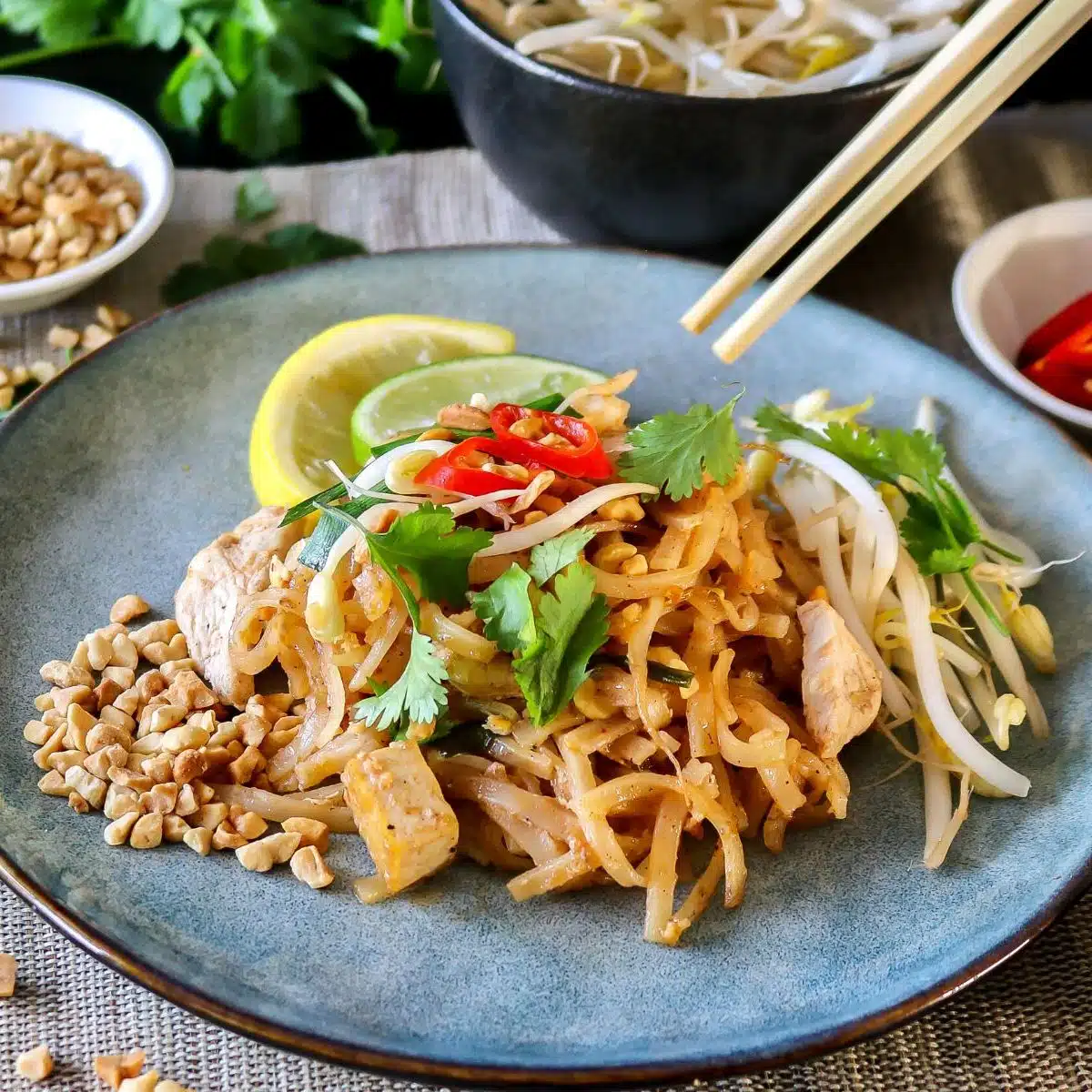A Journey Through the World of Pad Thai: From Humble Beginnings to Culinary Masterpiece
Related Articles
- A Taco Odyssey: Exploring The Diverse World Of Mexican Tacos
- Homemade Dim Sum: Crafting Dumplings, Bao, And Spring Rolls
- A Journey Through The World Of Vietnamese Pho: A Comprehensive Guide To Crafting The Perfect Bowl
- The Sweet Symphony Of Pavlova: A Culinary Journey Through New Zealand And Australia
- Pasta Primavera: A Celebration Of Spring On Your Plate
Introduction
In this article, we dive into A Journey Through the World of Pad Thai: From Humble Beginnings to Culinary Masterpiece, giving you a full overview of what’s to come
A Journey Through the World of Pad Thai: From Humble Beginnings to Culinary Masterpiece

Pad Thai, Thailand’s national dish, is more than just a delicious meal; it’s a culinary journey through time, a testament to the country’s rich history and vibrant culture. This seemingly simple noodle dish is a symphony of flavors and textures, a perfect blend of sweet, sour, salty, and spicy, all coming together in a harmonious dance on your palate.
Join us as we delve into the world of Pad Thai, exploring its fascinating history, mastering the art of preparation, and discovering the endless possibilities for customization.
A Culinary Time Capsule: The Origins of Pad Thai
The story of Pad Thai begins in the 1930s, during the reign of King Rama VIII. Thailand, under the leadership of Field Marshal Plaek Phibunsongkhram, was undergoing a period of modernization and nationalistic fervor. As part of this movement, the government sought to create a national dish that would unify the country and showcase its culinary heritage.
The result was Pad Thai, a dish that borrowed elements from various regional cuisines, weaving them into a tapestry of authentic Thai flavors. The use of rice noodles, a staple in Thai cuisine, was a nod to the country’s agricultural heritage. The addition of tamarind, a popular ingredient in Thai cuisine, provided a sweet and tangy base for the dish. And the inclusion of fish sauce, a cornerstone of Southeast Asian cooking, added a depth of umami that elevated the flavor profile.
Pad Thai was not just a culinary creation; it was a symbol of national identity, a dish that encapsulated the essence of Thai culture. It quickly gained popularity, becoming a staple in street food stalls and upscale restaurants alike.
The Anatomy of a Perfect Pad Thai: Unraveling the Components
Pad Thai is a seemingly simple dish, but its perfection lies in the delicate balance of its components. Let’s break down the essential elements that make this dish a culinary masterpiece:
1. The Noodle Foundation: A Foundation for Flavors
The foundation of Pad Thai is its noodles. These are typically made from rice flour, giving them a delicate texture that absorbs the flavors of the sauce without becoming mushy.

-
Rice Noodles: These come in various sizes and shapes, from thin and flat to thick and wide. The most common type used in Pad Thai is sen yai, which translates to "big noodle." These noodles are flat and wide, offering a good surface area for the sauce to cling to.
-
Choosing the Right Noodles: The thickness of the noodles can affect the cooking time and the overall texture of the dish. Thinner noodles cook faster and are ideal for stir-frying, while thicker noodles require a longer cooking time and hold their shape better.
-
Hydrating the Noodles: Before cooking, it’s crucial to hydrate the rice noodles. This can be done by soaking them in hot water for a few minutes until they soften. This ensures that the noodles cook evenly and don’t become overly sticky during stir-frying.
2. The Flavor Symphony: The Sauce That Makes Pad Thai Sing
The sauce is the heart and soul of Pad Thai, bringing together the sweet, sour, salty, and spicy elements in perfect harmony.
-
Tamarind: The Tangy Maestro: Tamarind paste is the key ingredient in the sauce, providing the signature tangy flavor that defines Pad Thai.
-
Fish Sauce: The Umami Conductor: Fish sauce adds a depth of umami to the sauce, creating a complex flavor profile that is both savory and satisfying.
-
Palm Sugar: The Sweet Harmony: Palm sugar adds a touch of sweetness to the sauce, balancing the tangy and savory notes.
-
Chili Flakes: The Spicy Accent: Chili flakes add a touch of heat to the sauce, bringing a spicy kick that enhances the overall flavor profile.
-
Other Ingredients: The sauce can also include other ingredients, such as garlic, shallots, and lime juice, to further enhance its complexity.

3. The Protein Partner: Adding Depth and Texture
Pad Thai is typically served with a protein, which adds depth of flavor and texture to the dish.
-
Traditional Options: The most traditional protein used in Pad Thai is shrimp. Its delicate sweetness and firm texture complement the flavors of the sauce beautifully. Other popular choices include chicken and tofu.
-
Beyond the Basics: For those seeking more adventurous flavors, there are countless other protein options available, including beef, pork, duck, and even seafood.
4. The Crunchy Companions: Adding Texture and Delight
The final touch to a perfect Pad Thai is the addition of crunchy elements that provide textural contrast and add bursts of flavor.
-
Bean Sprouts: The Classic Crunch: Bean sprouts are a staple in Pad Thai, adding a refreshing crunch and a slightly sweet flavor.
-
Ground Peanuts: The Nutty Touch: Ground peanuts are another classic addition, providing a nutty flavor and a satisfying crunch.
-
Other Options: Other crunchy elements can be added to Pad Thai, such as chopped scallions, cilantro, crushed red pepper flakes, or even a sprinkle of sesame seeds.
The Art of Stir-Frying: Mastering the Technique
Pad Thai is traditionally cooked using a wok, a large, round-bottomed pan that is ideal for stir-frying. The wok’s shape allows for even heat distribution, ensuring that the noodles cook evenly and the ingredients are cooked quickly.
-
High Heat, Quick Cooking: Stir-frying is all about cooking quickly over high heat. This ensures that the ingredients retain their freshness and don’t become overcooked.
-
The Art of the Toss: The key to successful stir-frying is to constantly toss the ingredients, ensuring that they cook evenly and don’t stick to the wok.
-
Seasoning and Finishing Touches: Once the noodles are cooked, the sauce is added and tossed with the ingredients until everything is coated evenly. The final touch is often a squeeze of lime juice and a sprinkle of chopped cilantro.
Beyond the Basics: Exploring Culinary Variations
While the traditional Pad Thai recipe is a classic, there are countless ways to personalize the dish and create your own unique culinary masterpiece. Here are some ideas for exploring different flavors and textures:
1. Protein Adventures: Experiment with different protein options, such as beef, pork, duck, tofu, or seafood.
2. Flavor Fusions: Incorporate elements from other cuisines, such as adding a touch of ginger, garlic, or lemongrass for a Southeast Asian twist, or incorporating chili flakes for a fiery kick.
3. Noodle Innovations: Try using different types of rice noodles, such as flat rice noodles or vermicelli noodles, for a different texture and flavor.
4. Crunchy Delights: Add other crunchy elements, such as crushed cashews, chopped peanuts, or fried shallots, for added texture and flavor.
5. Sauce Variations: Adjust the sweetness, tanginess, or spiciness of the sauce by adding more palm sugar, lime juice, or chili flakes, respectively.
Tips for Culinary Success: From Novice to Master Chef
1. Fresh is Best: Use the freshest ingredients possible for the best flavor and texture.
2. Seasoning Matters: Don’t be afraid to adjust the seasoning to your taste. Start with a base recipe and then add more fish sauce, palm sugar, or chili flakes as needed.
3. Don’t Overcook the Noodles: Overcooked noodles will become mushy. Cook them just until they are tender and still have a slight bite.
4. Use a Wok for Best Results: A wok is the ideal pan for stir-frying, but if you don’t have one, you can use a large skillet.
5. Get Creative: Don’t be afraid to experiment with different ingredients and flavors. The possibilities are endless!
Conclusion: A Culinary Legacy Continues
Pad Thai is more than just a dish; it’s a journey through time, a culinary tapestry that reflects the rich history and vibrant culture of Thailand. From its humble beginnings as a national dish to its global popularity, Pad Thai continues to captivate taste buds around the world.
Whether you’re a seasoned chef or a culinary novice, Pad Thai offers a delicious and accessible way to explore the flavors of Thai cuisine. So, grab your wok, gather your ingredients, and embark on your own culinary adventure with this beloved national dish. The journey begins with a single bite, a symphony of flavors that will transport you to the heart of Thailand.
Closure
Thank you for reading! Stay with us for more insights on A Journey Through the World of Pad Thai: From Humble Beginnings to Culinary Masterpiece.
Make sure to follow us for more exciting news and reviews.
We’d love to hear your thoughts about A Journey Through the World of Pad Thai: From Humble Beginnings to Culinary Masterpiece—leave your comments below!
Stay informed with our next updates on A Journey Through the World of Pad Thai: From Humble Beginnings to Culinary Masterpiece and other exciting topics.






